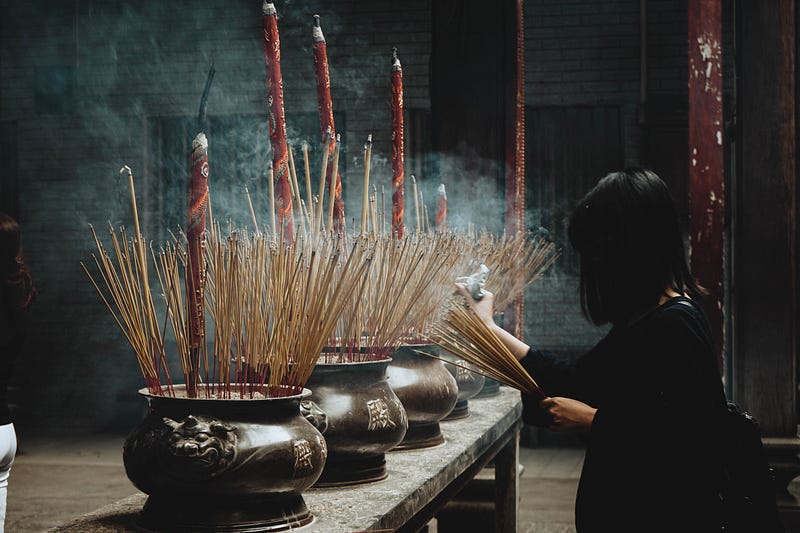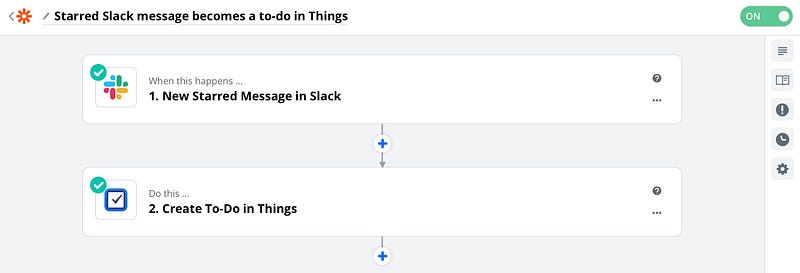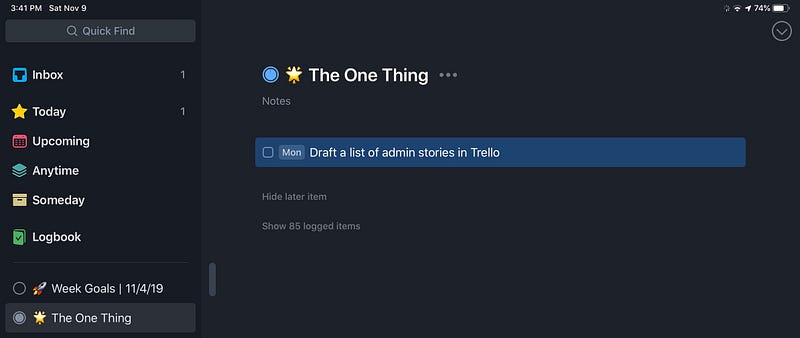How I stop thinking about work after work

Our personal practices can be thought of as a “ritual” — held sacred and done a particular way.
The kind of weekdays I love most is when I feel focused during the workday and stress-free at night.
What differentiates a day where I feel focused from a day I don’t is if I’m clear on my answer to this question:
“What’s the one thing I’m going to accomplish today?”
You know those days where you felt like it was busy but you have no idea what you got done? That’s the kind of day I’ll have if I don’t have an answer to this question.
There is an ever-pervasive temptation for productivity nerds to add more tasks to their to-do lists. Anything that pops up in my head can be translated into a tangible next action. So then I translate anything that I think about into next steps, and suddenly, my to-do list is giant! That’s why setting an intention on the one thing you want to accomplish is powerful — it’s a forcing function that acts against our natural instinct to add more to our never-ending to-do lists.
Anyway, there’s a second part I enjoy about these days: while my workday was incredibly focused, my weeknight is completely unplugged from work. I’m having dinner with a friend or loved one. I’m doing something I enjoy. I’m learning something. And I don’t have any work-related thoughts until the next day.
For me, this kind of weekday requires a nice, clean break between the focused workday and relaxing weeknight.
Cue, the end of day ritual
There’s one practice that gives me that clean break: the end of day ritual.
I first read about the end of day ritual in my undergraduate, tried it, and haven’t looked back. As my work life took on different forms throughout the last six years, my end of day ritual has taken many different forms yet has remained steady.
Here’s how it works. At the end of every workday, I take no longer than twenty minutes to do five things:
Process Today’s tasks
Capture open loops in my email & Slack messages
Process Things inbox
Write tomorrow’s One Thing
Limit tomorrow’s tasks to 8 or less
The end of day ritual is basically me telling my brain, “Brain! Do not fret. For work is taken care of, and you won’t wake up with twenty-seven things to do.”
Let’s go into each step.
1/ Process Today’s tasks
Let’s be real: I don’t always complete my day’s to-do list. By the time 5:30 pm creeps around, I may have some leftover tasks on my list. So, I process these leftover tasks.
I want to be clear: Process Today’s tasks does not mean Do Today’s tasks. I don’t force myself to finish the to-dos. I do one of three things: I do, defer, or delete it.
If the task will take less than two minutes, I do it.
If the world won’t shatter if I don’t do the task, I defer it to a different day.
If the task isn’t actually important, I’ll delete it.
You might cringe at the idea of deleting a task. “What if you delete a task that’s important?” My belief is to err on the side of it being not important. If a task is truly important, it will find its way back to your workflow.
2/ Capture open loops in my email and Slack messages
I then capture any actions I need to take and replies I need to make from work communication I’ve yet to read. I’ll read my unread emails, capture that email onto my task manager (Things) if it’ll require a response or an action, and archive the email. The to-do will say “reply to <person>” or “read client document.” If the message just needs a quick reply, I’ll quickly reply. If the email doesn’t need an action or response, I archive it.
For Slack, I’ve set up a Zapier integration so that any starred Slack messages go directly into my Things inbox.

My goal in this step is to spend the least amount of time to get to inbox zero. It’s incredibly easy for me to get sucked into the trap of writing a thorough response in this step when I really should just capture the action and trust that I’ll respond later. (For a really, really smart guide on email, I recommend this one.)
3/ Process my Things inbox
At this point, I have a lengthy list of to-dos in my task manager’s inbox. So, I’ll process each of them. This step usually takes less than three minutes.
Again, process, in this case, doesn’t mean do. It means I’ll…
do the task if it takes less than two minutes
defer it if the world won’t shatter
delete if it’s truly not important
4/ Write tomorrow’s One Thing
I’ll then write down tomorrow’s most important task. Generally, I recommend writing your One Thing somewhere you can easily reference: your Apple notes, your daily physical planner, or a sticky note on your desk. For you Things users, I write it as a to-do under a separate project labeled “The One Thing” and give it a date so that it shows up in the next day’s Today.

I used to write my One Thing at the beginning of my workdays, but recently switched it to writing it the day before. What I love about writing it the day before rather than the day of is that I’m separating “planning Tim” from “doing Tim.” I can’t stress this enough: having my One Thing written the day before gets me focused the next day, without fail.
5/ Limit tomorrow’s tasks to 8 or less
With tomorrow’s One Thing in mind, I have a good sense of which tasks on my list deserve my time and attention the next day.
For the agile nerds, this step is a personal work in progress (WIP) limit. The basic idea is that limiting the amount of work we take actually increases our productivity because we’re forced to context switch and multi-task less.
I’ve found that the average amount of tasks I complete (on my Things) is around 8 or 9. These tasks don’t account for work that takes over thirty minutes of focus, such as revising a presentation or drafting a blog post. This kind of work goes on my calendar. So what this means is that the average amount of tasks I get done in a day (given I have parts of my day where I’m doing deep work) is 8.
I limit my tasks to 8 because I want to be as honest with myself as possible about one thing: how much can I get done in a single workday? Your mileage will vary. I’d rather set out 8 tasks and complete them all verses set out 23 and complete 8. In the former scenario, I’m motivated. In the latter scenario, I’m kicking myself for being an unproductive scrub.
Practice always matters more than process
In almost every personal productivity piece I’ve written, I make the point that there isn’t a perfect way of doing it. The takeaway is no different with this piece. A solid end of day ritual looks different for everyone.
If you’re interested in trying your own version, resist copying and pasting this workflow into your own. Consider these three things:
Get clear on how you want to benefit from this practice. Do you feel like you want to be more focused on weekdays? Or do you feel like you think about work a lot during weeknights?
Design your own end of day ritual. What’s a practice you can try that would help alleviate these problems?
Test it! What day and time will you try your practice?
When it comes to personal productivity, practice is always more important than perfection. You can’t create the perfect practice, system, or workflow. But you can create ways for your intentions to manifest, evaluate whether you did what you intended, and uncover better ways to manifest your intent.
